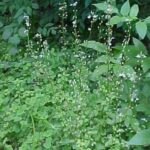The dainty blooms of Lobelias are enchanting in the garden or trailing from containers. These old fashioned charmers are easy to grow and produce a profusion of jewel-like flowers.
Delicate-looking Lobelias yield small, tubular flowers in blue, white, magenta or lilac, many with a contrasting white throat, over small, rounded, bronze or green leaves. Glooming from early summer through autumn, this annual plant is available in compact varieties as well as trailing varieties with stems up to 60cm long.
‘Crystal Palace’ is the classic compact Lobelia, with dark blue flowers 1cm across, set off by bronze foliage. ‘Blue Moon’ blooms earlier and is more tolerant of heat than other compact Lobelias.
Basket Lobelia’ is a trailing variety which has bright green leaves and rich blue flowers with a white eye. They make excellent plants for containers.
With tidy, compact varieties and graceful trailers to choose from, Lobelias are well suited to many locations in the garden.
Frame beds of annuals and perennials with a tidy edging of compact Lobelias. These low-mounding plants also serve as a lovely, small scale groundcover that sets off taller flowers effectively.
Rock gardens provide an ideal setting for Lobelias. Plant compact varieties among smaller rocks with other low growing plants. Use trailing Lobelias to casually integrate larger rocks into the garden.
Plant trailing Lobelias to spill gracefully over the edge of a window box or planter. Fill a hanging basket with Lobelias to bring the flowers to eye level.
The clear colors of Lobelia blooms harmonize with many other flowering plants.
Edge a bed of white Impatiens with the compact wine red Lobelia ‘Rosamond. Or plant pure white ‘Snowball’ Lobelias to edge and unify a perennial border of Columbines, dwarf Daylilies and Campanulas.
For a mostly blue annual border, try a combination of ‘Crystal Palace’ Lobelias, powder blue Ageratums and ‘Blue Daddy’ Petunias, accented with the delicate blooms of dwarf white Cosmos.
Plant ‘Blue Sapphire’ Lobelias around the edge of a decorative pot containing white Zonal Geranium. The white centers of the Lobelias highlight the Geranium flowers dramatically.
To plant and provide aftercare for your potted Lobelias you will need:
Lobelia seedlings
25cm pot
Potting mix
Fine wire gauze fertilizer
1. Pour enough potting mix to fill the pot into a bucket and add water to make the potting soil camp, but not soggy.
2. Place a piece of gauze over drainage hole to prevent soil from spilling. Fill the container within 10cm of the rim with soil.
3. Space five Lobelia plants around the perimeter of the container and place one in the center. Fill with soil to within 3cm of the rim.
4. Water thoroughly. Place the container in a partly shaded location; morning sun is ideal. Turn the plant occasionally.
5. After the first flush of blooms, cut back the plants with a scissors to about 8cm to induce new growth and more flowers. Fertilize and water.
A word of caution is that all parts of Lobelias are poisonous. Take care that the plants are out of reach of small children and ensure you wash your hands thoroughly after coming in contact with them.
When buying Lobelia, buy compact, healthy plants not in bloom with stocky stems and rich green leaves. The plants should have been kept in a shady location at the nursery.
Avoid leggy plants with curled leaf edges or faded, yellow foliage.
Lobelias should be planted in partial shade in hot areas. A location in full sun is fine where summers are cool and foggy. Shade newly planted seedlings for the first few days.
Add plenty of compost to enrich the soil and hold moisture. A dose of diluted fish emulsion will help Lobelias begin to grow quickly after they are transplanted out into the garden.
Lobelias are seldom bothered by diseases or pests but may become heat stressed in hot weather and cease blooming. Give them extra water and, if needed, cut them back. They will grow and bloom again when the weather has cooled.
Seasonal tips
Winter: sowing seeds
Sow seeds six to nine weeks before time to plant outside. Press seeds into soil mix, but do not cover, as they need light to germinate.
Spring: Planting
Plant seedlings in compost-enriched soil. Spread a thin layer of mulch around plants to conserve moisture.
Summer: Cutting back
Cut spent blooms regularly to encourage repeat flowering all summer.
Late autumn: Lifting
When the weather turns cold, pull up dead plants and add to compost pile. Add a layer of mulch to protect the soil over winter.






